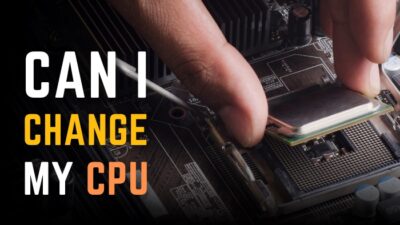During operation, a processor generates heat, which is dissipated by a heat sink. The thermal paste is used to conduct away heat from the CPU to the heat sink.
But what if you ordered your PC & forgot about the thermal paste? Is it safe without the paste, or will the PC work normally?
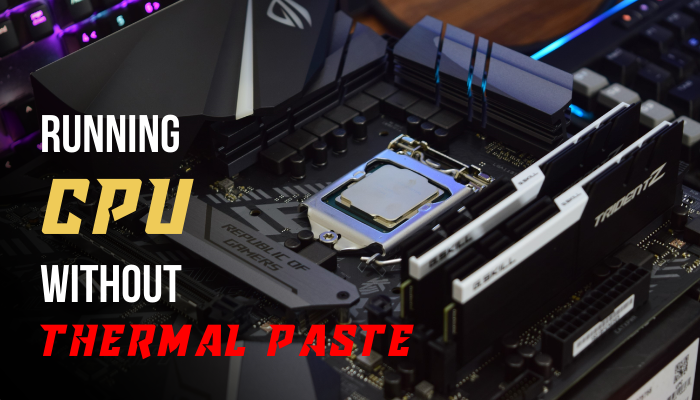
In this article, I will explain the importance of thermal paste & how to apply it properly. Let’s dive in.
Can You Run a CPU Without Applying Thermal Paste?
A CPU will require proper voltage and an adequate cooler to function initially. But, like voltage or cooler, thermal paste is not a required part to operate.
However, the paste is a crucial compound that assists to cool the processor. It minimizes the gap between the chip & heat sink. The CPU needs to stay at a comfortable temperature to perform at the max level, & the paste aids it.
CPU manufacturer set TjMaxㅡTjunction Max is the critical temp value at which the chip starts to drop the performance, which is also known as throttling. During this phase, you will face stuttering & running longer periods with critical temp can damage the chip too.
So what will happen if you don’t use thermal paste?
Though the heat sink surface & the CPU top seems flat, during installing the heat sink on the chip, there can trap air bubbles.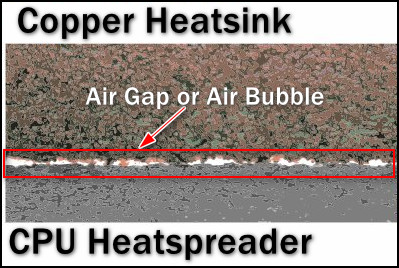
Without thermal paste, these air bubbles prevent heat transfer to the heat sink. This results in an ineffective thermal cooling process. Also, it causes overheating & eventually fails to operate.
Thermal paste is a must to improve thermal efficiency. The paste works as a bridge between the CPU lid & the heat sink. As well as that, the paste minimizes the gap & tightens the contact for better thermal conductivity.
Without the paste, the PC can turn on, but due to the high temp after some CPU load, the system will shut down to save the chip from damage. That brings a question, can the CPU get fried?
So, for a better thermal solution, thermal paste is requisite. Let’s dig into why this is required & how to apply thermal paste when you need to.
Why is Thermal Paste Mandatory & How to Apply it?
Thermal paste is compulsory to mitigate the micro flaws of the surface contact. As mentioned, air bubbles can trap between the contact space of the heat sink and the chip, & air is not good at heat transfer, so the cooling system fails to fully cool down the CPU quickly.
To maintain 100% physical contact with the CPU heat spreader & the heat sink, thermal paste works as a filler to replenish the minor flaws & air bubbles. Thus, the paste saves the chip from long-term damage & maintains the comfort temp.
So will the CPU burn without the paste? ImmediatelyㅡNo. But if I use it for a long time? Yes. Should I try it? No.
Because, although the CPU will turn on, it will not sustain a longer period. As I don’t have any intent to buy a new chip, I will not try it. Neither should you.
Basically, you should always use thermal paste for the best thermal solution. Properly applying the thermal paste is also crucial. Otherwise, you may accidentally drop the compound & then have to clean the paste from CPU pins or motherboards.
Here are the steps to apply thermal paste when needed:
- Turn off the system & plug out all the cables from the casing.
- Pull out the heat sink from the CPU carefully.
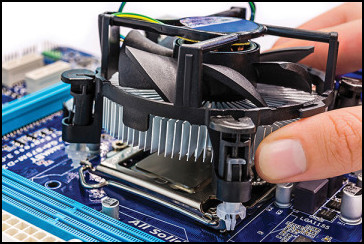
- Clean the chip’s heat spreader & heat sink with isopropyl alcohol.
- Look for any debris or residue of old thermal compound left & clean it properly.
- Clean & prepare the CPU cooler.
- Apply a pea-sized paste in the center of the CPU lid.
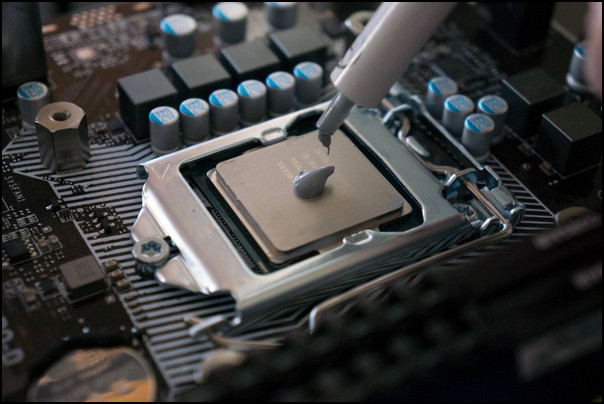
- Place the heat sink above the CPU with enough force & tighten the cooler.
During the process, you should follow some cautions to avoid any type of issues. As the paste is thermally conductive, spilling out on any MOSFET or CPU pin or motherboard is not a good idea. Also, don’t use water, instead, use rubbing alcohol to clean the paste.
Here are the cautions you must follow during the process:
- During detaching the cooler, carefully pull out the heat sink, or else the CPU can also come out of the socket by breaking the socket lever.
- Carefully clean the thermal paste, or else, the old residue can trap air bubbles. In that case, our main intent will fail.
- Don’t spread the paste with your hand. During installation, use the heat sink to spread the compound.
- While mounting the cooler, don’t force it too much, or else you break the motherboard or something.
That being said, don’t loosen the screw of the cooler. You must tighten the cooler if it’s loose, otherwise it can start to vibrate and don’t work effectively.
How Often Should You Replace Thermal Paste & its Alternative?
The thermal paste is not trendy like CPU & GPU. But it’s a vital part of the processor to work effectively. So, always keep an eye out for the temp to prevent CPU breakdown.
Usually, you will be required to change the thermal paste yearly basis, based on its quality. That being said, you may ask that after removing the heat sink, does it need to apply thermal paste?
Yes, every time you open up the cooler, it requires repaste; don’t keep the old paste thinking it will work.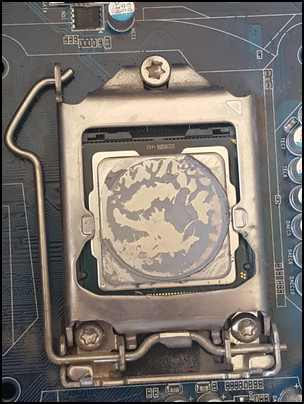 In addition, if you encounter high temp, you should inspect the thermal paste alongside the cooling system.
In addition, if you encounter high temp, you should inspect the thermal paste alongside the cooling system.
What if you need to repaste & there is nothing left in the tube? But you need to use the PC for urgency like finishing assignments or testing newly bought PC parts. Well, as an alternative, you can use hazelnut spread, diaper rash cream, or butter. You can also use toothpaste as a short time thermal solution, for like a few hours.
Though, keep in mind that these compounds are temporary solutions & not recommended. As soon as possible, you should properly clean those & reapply quality thermal paste.
What Happens if Thermal Paste Gets on the Motherboard?
We use the thermal paste as a thermally conductive compound. So if the paste gets on the mainboard or other components, it can short circuit & damage the components.
This is why you should apply a pea-sized paste in the center of the chip. If you overuse the paste, it can spread outside the socket or onto the CPU pin.
Also, don’t spread the paste by hand or something. Just mount the heat sink properly & it will do the job.
FAQs
Should I spread the thermal paste myself?
You shouldn’t spread the paste manually. Instead, put the heat sink vertically to mount it & spread the paste with the heat sink.
Can I apply thermal paste by hand?
You shouldn’t use your hand while applying thermal paste. Your hand can add dirt or residue to the thermal paste.
Can I use water to clean the thermal paste?
You should always avoid water, as it can damage your full rig. Instead, use 99% isopropyl alcohol or rubbing alcohol to clean up the old thermal paste.
What is normal CPU temp?
In normal usage, the processor temp should stay between 40° C to 65° C. While gaming or CPU-intensive work, it can rise up to 85° C.
Final Thought
A processor without thermal paste is a no-go. To make the PC functional & healthy, it is recommended to use thermal paste.
You should change the paste if you open up the cooler for some reason or if the chip gets too hot.
In this article, I described the significance of thermal paste for PCs. If you have further queries, leave a comment.



